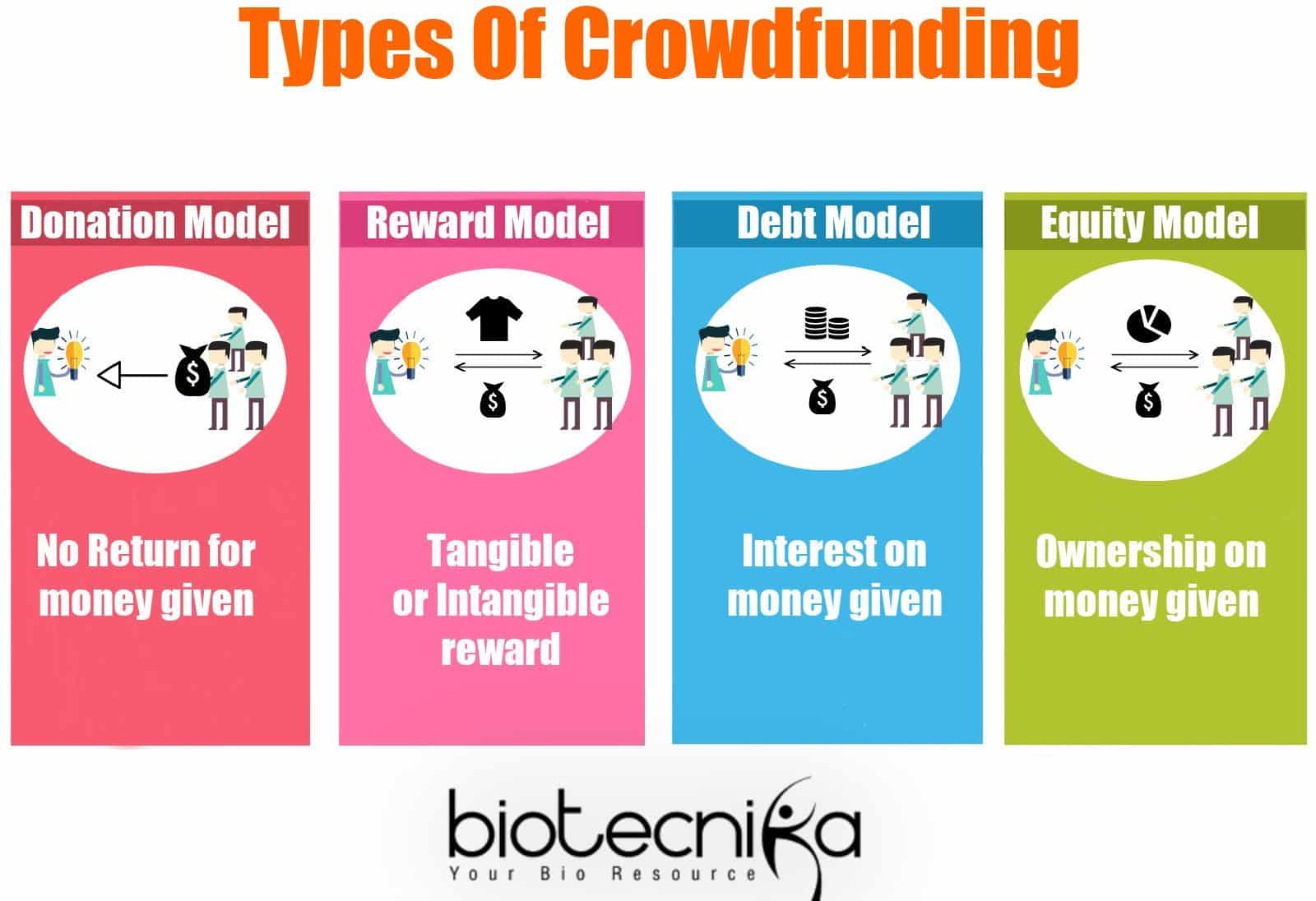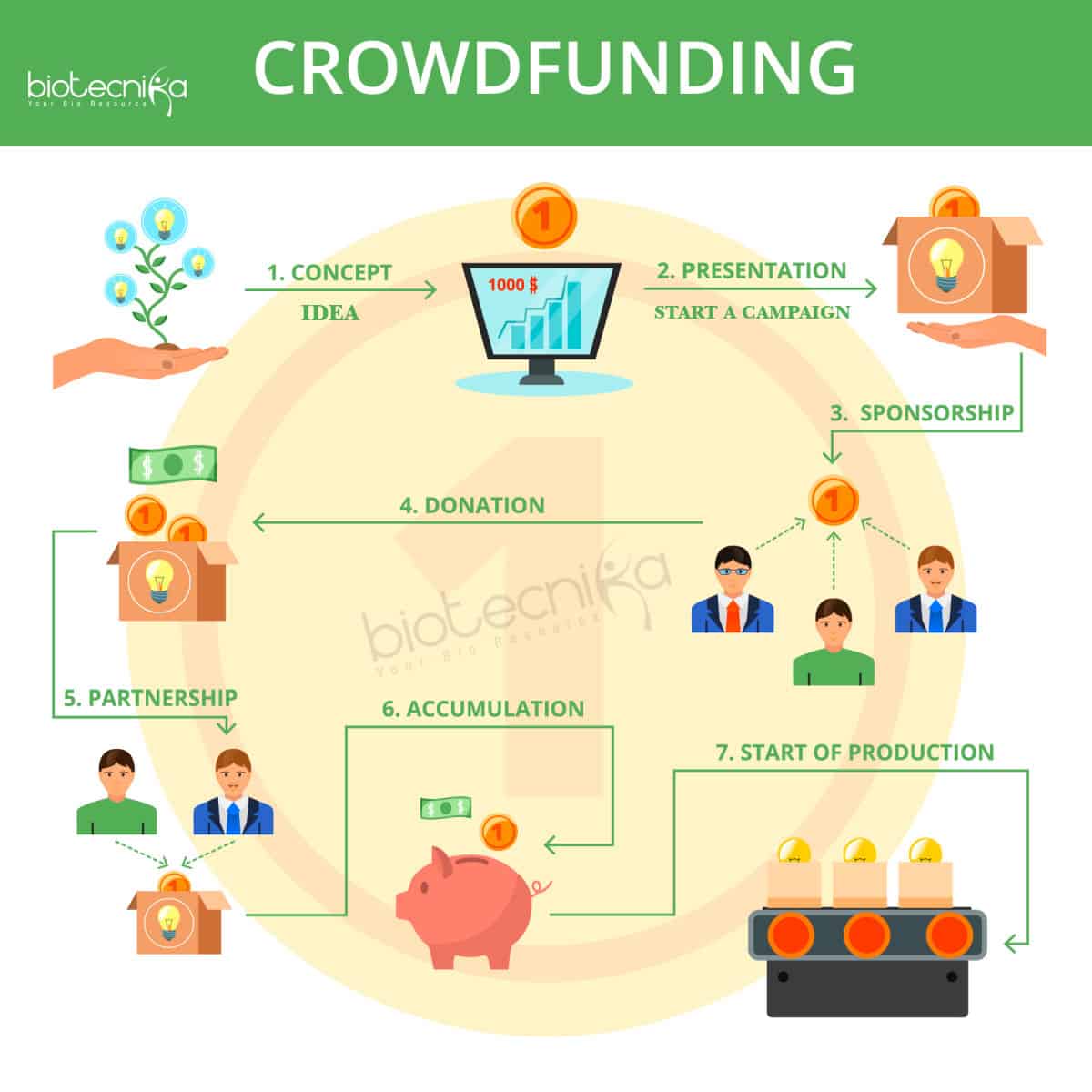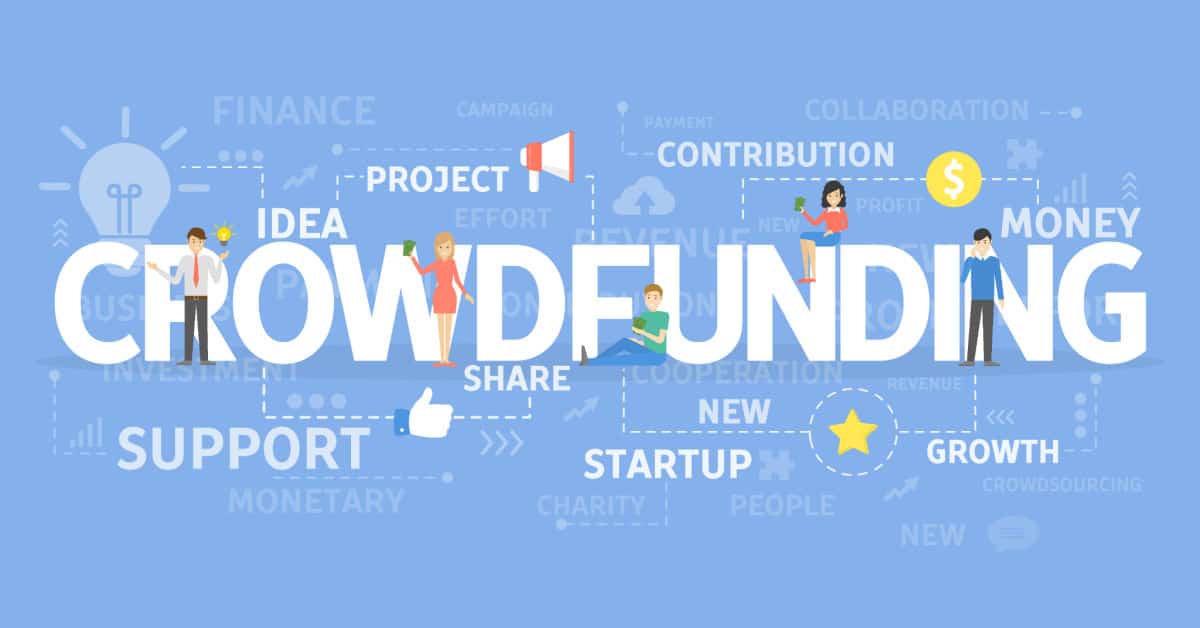The past two decades have swirled up scientific practices dramatically with social media and the internet for establishing a widely connected and collaborative network of scientists and the general public. This pioneering approach is also introducing new strategies to raise money for research works. Newbies in the scientific community, particularly researchers and students, from emerging nations like India with poor funding in scientific research have started to look for a wonderful and alternative way which is crowdfunding.
The term “crowdfunding” may be completely new to a few. So this article is going to provide you awareness on scientific crowdfunding, the best platforms available, and the pros and cons of this method.
What Exactly Is Crowdfunding?
Crowdfunding simply means raising money from numerous people for a cause or a project. This online-based platform is commonly categorized into four forms:
- Equity crowdfunding
- Debt crowdfunding
- Reward crowdfunding
- and Donation crowdfunding.
– The equity model means investors will receive a portion of business/copyright in the form of equity in return for money provided by them.
– In the case of the debt model, it is similar to a loan-investors will receive interest in return for the fund.
– The reward model, on the other hand, involves gathering financial contributions in return for some kind of reward. It can either be tangible like a t-shirt or intangible like recognition.
– Finally, the donation model refers to the collection of hundreds of small donations to meet the goal. Here, donors feel good about the contribution.
What Happens In Crowdfunding?
For scientific crowdfunding, researchers or students usually upload their projects on an online platform in order to start a campaign. These campaigns take the shape of communication and marketing campaigns, wherein the project owner tries to reach out to several investors through media coverage and social networks. Hence, crowdfunding facilitates non-academic personnel to interact with scientific communities around the world. This method is also an alternative funding source, provided the hardship for conventional funding protocols. Even though crowdfunding can’t entirely rectify the funding issue, it can be a feasible alternative for certain kinds of science projects.
Despite crowdfunding being a popular go-to source of money for creative types and entrepreneurs, it is gaining widespread acceptance in the scientific world, especially among young researchers who are just beginning to create their publication records. The biggest scientific crowding base is the Experiment, which has supported scientists with 964 funded projects since its establishment in 2012.
What Is The Pricing For Crowdfunding Sites?
Each site charges different fees. Remember to go through all of the pricing by the site before starting campaigning. The typical charge for most of the sites is for processing, which could be 3-5%.
Is It Really Worth The Money?
These platforms are a wonderful means to collect a huge sum of money in a short time interval. But, charges might add up, therefore one needs to be cautious to recheck its worth. If the project is quite popular among the public or there is a big social media following, it can be quite simple to justify the fund. Remember that you have to spread the news of your crowdsourcing campaign so that individuals can fund accordingly.
The Best Scientific Crowdfunding Platforms

The experiment is a US-based online scientific crowdfunding platform that discovers, funds, and shares scientific works all over the world. It operates on all-or-nothing prototypes. This platform charges a fee of 8% only if it succeeded in campaigning, or else no one is charged. Anybody can begin a campaign freely by uploading their proposal as long as the outcomes can be openly shared.

In this US-based online crowdfunding & marketplace platform, there is no particular science category. However, there is an Energy & Green Tech category that is ideal for environmental biotechnologists. It operates on a reward model where investors are rewarded with a gift. This platform charges a fee of 5% on the funding. The campaigners can also use this platform to sell their products to consumers within the Indiegogo network directly.

This platform provides both all-or-nothing and flexible approaches. According to Crowd. Science, the projects have to come under any of these categories: science communication, applied science, and scientific research. It charges no money for starting a campaign, but it takes a fee of 5% for completely funded projects and an additional 3% will be for the payment gateways used by the platform.

FundRazr is a free platform for crowdsourcing. This online platform provides innovative tools for science & research organizations. It has three fee options: pro, standard, and free. No charges for non-funded projects.
A Comparison Of Traditional Funding & Crowdfunding
Despite crowdfunding’s wide popularity, it is at a developing phase and there are no specific reports proving the exact odds & success rates for scientific crowdsourcing. Moreover, it is hard to quantitate the cost and time for a campaign compared to conventional funding practices. It must be lucid so anyone trying to fund the project can clearly understand the idea. Therefore, the preparation one must do to have a fair chance of success is extensive and laborious.
Nonetheless, the experience itself and the advantages can be substantially more worthwhile than a grant submission. This is because you get to meet several new private investors and collaborators, form an unexpected connection for your work, and associate with the general public directly and captivatingly.
| Traditional Funding | Scientific Crowdfunding | ||
| Pros | Cons | Pros | Cons |
| Quality ensured with meticulous peer review | Restricted autonomy to study specific topics | Facilitates independence & intellectual flexibility | The amount of money received is influenced by the audience formed |
| No need to spent resources and time after submission | Confined option for approval | Make active participation of the public in science | Popularly marketed proposals with insufficient credibility might get sourced |
Tips For A Successful Scientific Crowdfunding
Target as big as you can
The campaigner has to focus on building a large network because the success mostly relies on the network he or she has. Project owners must use online social platforms like Twitter, LinkedIn, Facebook, and so on due to their significance in enhancing the success rate. Therefore, if you lack a solid network, start creating one quickly as it takes a while to form a strong network. Another method to form a large connection is by using tools like hubs and general forums.
Traditional offline social connections are the most important group one has to solidify. During the initial phase of the campaign, they are the only reliable group. These people would be ready to back you because they know you well. Therefore it is essential to create a core of supporters and followers for your campaign. This will prove people in general trust your work and this will eventually make the other network groups help you. Network enlargement can also be achieved by talks and events pertaining to your research work.
Be Ardent About Your Project
One has to convince that the project is noteworthy to attract people to involve and support the cause. Similar to trust, passion also plays a great role in boosting the success rates for crowdfunding.
Convey The Message Engagingly & Clearly
It is general fact that people browsing will only spend their valuable time on really interesting and alluring topics. So, go beyond the technical concept and project the reasons for the project in such a way that it is crisp and appealing.
Describe the Project to the Public/Show them
Scientific campaigns with engaging videos and infographic pictures are profoundly successful. More than giving an in-depth understanding, the public should like the project.
Don’t Ask for the Moon
Scientific crowdfunding is not yet ready to gather money for extravagant projects. Hence, it is crucial to remain realistic with the fund. Most of the platforms adopt either a flexible or all-or-nothing pattern. A flexible model facilitates one to obtain every penny collected even if it has not met the actual target amount. Whereas, the all-or-nothing model only gives one the fund if they are able to achieve the goal. Thus, wanting too much funding might not even get you a single penny.
Be Scrupulous & Clear on how to utilize the fund
It should be clearly stated about the equal and adequate portioning of the fund for each part of the work. It would be ideal if one can show a chart illustrating the division strategy. It is also significant to clarify that you are working on an experiment that might take several months or even years to complete or even may not end with any outcome.
Provide Meaningful Rewards
In some cases, campaigners might not have a proper product to gift the investors. But, a gift can also be a kind of opportunity. This is where you need to reward your supporters with creative and meaningful gifts. For instance, acknowledgments in webpages, authorship, a day in the field or lab. If at all, the project gets a final product, share the first sample with your supporters as a gift.
Always Update!
The people present in the specific platforms are actively participating due to their interest in the project. Therefore, it is significant to update frequently about the progress. They should feel as if they are a part of the work. Remember to constantly appreciate them as well. This will enhance engagement and prove one’s commitment.
Do expect negative feedbacks as well
Both negative and positive comments can arise from your campaign. Take the negative feedbacks as a motivational drive for improvising your campaign and neglect the offensive comments.
It Is Not Just About Money
Money is merely a beneficial aspect of crowdfunding. Even then, one needs capital to execute the research work. Hence don’t be discouraged with the first failure, return to the board, analyze your mistakes, attempt to learn from others’ experience, and with the reinforced network and your acquired experience, the following campaign will most probably be successful.









































